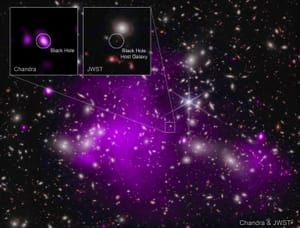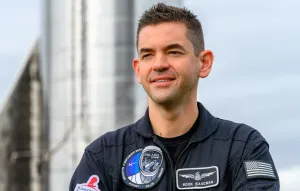
Nov 16, 2023
NASA's telescopes have made an extraordinary discovery, uncovering a black hole that breaks all records.
Using NASA telescopes, astronomers have made a groundbreaking discovery by identifying the farthest black hole ever observed in X-rays.
A group of scientists successfully detected the distinctive mark of an expanding black hole, a mere 470 million years after the Big Bang. By merging information from NASA's Chandra X-ray Observatory and NASA's James Webb Space Telescope. The host galaxy and the black hole are at a similar stage of growth, which has not been observed previously, with the black hole's mass being equivalent to that of the galaxy. This may help us better understand how some of the first supermassive black holes in the universe formed. The discovery of the black hole occurred within the UHZ1 galaxy, situated in the vicinity of the Abell 2744 galaxy cluster, which is positioned approximately 3.5 billion light-years away from our planet.
According to Akos Bogdan, the discovery of the incredibly far-off galaxy required the assistance of Webb, while Chandra was instrumental in locating its supermassive black hole. According to data from the Webb telescope, the galaxy is situated much farther away than the cluster, at a distance of 13.2 billion light-years from Earth, during a time when the universe was only 3% of its present age.
During a period of more than 14 days, Chandra-X conducted observations that revealed the existence of highly energetic, extremely hot gas emitting X-rays within this galaxy. This serves as a distinctive characteristic indicating the presence of an expanding supermassive black hole. The galaxy's light and the X-rays emitted by the gas surrounding its supermassive black hole are amplified approximately fourfold by the intervening matter in Abell 2744, thanks to the phenomenon of gravitational lensing. This amplification enhances the infrared signal detected by Webb and enables Chandra to detect the faint X-ray source. The observations were motivated in part by the previous findings of NASA's Hubble Space Telescope, which demonstrated that matter in intervening galaxy clusters can greatly magnify the light emitted by distant galaxies.

This is undeniably a significant achievement. The researchers are currently strategizing to utilize this breakthrough, along with additional findings from the Webb telescope and the integration of data from other telescopesm, to construct a more comprehensive understanding of the early universe.



